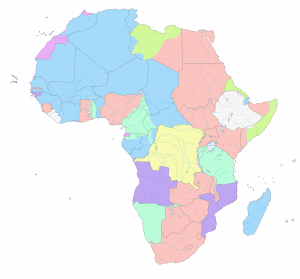
Explore fun, engaging and exciting world themed activities to do with toddlers, preschoolers and kindergartners. Our activities are widely used by teachers, moms, dads, child care providers and more!
All our activities are available at no cost and are free to print and share. Today we will be covering the continent Africa!
Africa Arts and Crafts
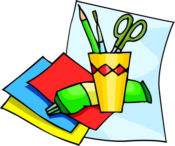
Craft Area
Add African animal stamps and pens
Weaving
Use a Styrofoam tray with rubber bands around it and weave with ribbon, feathers, sticks, etc.
The Village of Round and Square Houses
Read “The Village of Round and Square Houses.” Make round and square houses with paper and straw etc., after reading this book.
Beads
Use 2 cups flour,1 cup salt and small amt. of water to make a dough. Knead the dough. Have the children make circles and square shapes. Stick a small toothpick into the clay to make the hole. Bake in oven at 225 degrees for 1 hour. Once cool let the children use markers to decorate them. Then let the children string them into a necklace. You could make a bracelet using elastic thread.
African Masks
Masks have been made for thousands of years from all kinds of materials and for many different uses. Some are religious, or represent nature and tribal ancestors. Dancers wear masks in ceremonies to bring rain or chase away evil or sickness.
Using a paper plate fold in 1/2.Cut out eyes, nose and mouth. These can be painted. You can hole punch all around edges and add yarn or raffia.
African Shields
Shields were made in a great variety of sizes and shapes. Some only a few inches long were carried in dance rituals and were merely symbols of their original use. Shapes varied from tribe to tribe.
Using a paper plate staple a strip of strong paper to the back and staple on each side of the plate. The child will insert a hand into the back of the plate and the paper will keep the shield in place. Let the children decorate the plate. Color and glue on cut up wallpaper pieces, sequins, yarn, etc. Let the kids dance around with the shields.
Kofis (Pronounced>Koo-fees)
Kofis look like a pillbox hat and are a traditional headdress for celebrations. These special hats add authenticity in role-playing and the study of African culture.
Use dark construction paper 24″x2″ for the headband. Cut 6 strips 12″ long by 2″ wide. Arrange strips like a wheel, overlapping in the center. Staple the center or use a brad (paper fastener). Punch holes all around the hat and attached the strips with the brads.
Calabash Bowls
A Calabash is a bowl made from dried gourds. We make papier-mâché to create our bowls. I turn over a small foam bowl with a piece of plastic wrap taped over it. let the children lay strips of newspaper that have been dipped in glue over the bowls. Do more then one layer. When dry, remove and cut them into a circle or bowl shape. Paint with bright colors and spray with clear acrylic.
Flags
Each African country has its own flag of meaningful colors: green symbolizes growing things, yellow symbolizes the sun, red the blood of the people, blue the sea, white peace, and black the people or African freedom.
Have the children make their own flags, be sure to ask them what the colors that they have used signify to them!
Wodaabe Mirror Pouch
Poster board or oak tag, dark in color, 5″ X 10″, Yarn, gimp 3′ long, Aluminum foil, 3″x4″, pencil, glue tape, scissors and hole punch. Decorations: Beads, buttons, gold foil, small shells, bits of
colored paper.
Fold board in half, Open it and draw a 2″x3″ box in the middle of top half. Cut up and around 3 sides, leaving bottom edge attached for a flap. Push flap through to other side and glue or tape foil to cover inside opening. Fold the poster board closed. With edges closed. Punch holes through both layers on three sides, but not folded one. Sew up the edges, even the ends and tie around the back of your neck. Glue on decorations. The Wodaabe place decorations in rows. The Wodaaabe people of Niger wear leather mirror pouches decorated with cowrie shells, beads, and copper, and more, around their necks. Other Africans use found objects like large safety pins and even pieces of zippers in their arts and crafts.”
Rainsticks
For centuries many tribes have used rainsticks to summon the rain. Let the children fill paper towel rolls with rice, beans etc. Cover the ends with a small circle of poster board and masking tape. Let the children paint. SAVE THOSE PAPER TOWEL ROLLS! Our kids made a huge rainstick using a mailing tube. Let the kids hammer in roofing nails all over the tube. Cover the end w/poster board and clear tape, then filled it with rice.
Experiment with the sound of different amounts of rice. When you like the sound, tape up the other end. Let the children paint a stripe horizontally until each child did one. Then let each child take a pencil dipped in paint and make dots all over the tube.
Africa Games and Activities
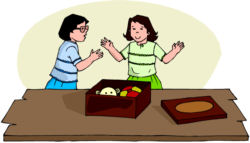
Drums
Africa probably has the largest variety of drums to be found in any continent, but virtually every other type of musical instrument is also represented throughout Africa. Of the drums, the most characteristically African are those known as “talking drums” because they can reproduce the tonal inflections and rhythms of African languages. In Zaire, Congo, and other countries in Africa, drums or gongs, as they are called in Congo are still used to send messages.
I use a pot turned upside down and a wooden spoon. Let the children tap out a drumbeat. Tell them that the drums were used to send important messages. Then ask the kids to tell you what they said on the drum. Pass it around the circle.
Set out a variety of objects for the children to use as drums. Oatmeal boxes and coffee cans with plastic lids can serve as hand drums. For larger drums place objects such as wastebaskets, ice cream buckets and cardboard boxes upside down on the floor. Let the children experiment with the drums and talk about the different sounds they make. Which ones are the best for making a sound like falling rain? Which ones are best for making the sound of elephants stomping? Tap out rhythms for the children to repeat. Play African music and let the children accompany the music with the drums.
Balancing
The African people go about their daily business w/pots of water, food, blankets, etc. on top of their heads. Let the children practice at balancing a few folded blankets on top of their heads.
Slings
The African women go about their daily business w/their children in a sling on their back. I made a simple sling for the children to use and carry a doll in the sling.
Galloping Zebras
Have children stand in a large circle and pretend to be zebras. Have one child to stand in the middle and beat a drum using fast and slow rhythms and the other children can gallop to the beat of the drum.
Stripe Matching
Draw from one to five pairs of index cards. Mix up the cards and let the children take turns matching the stripes.
Monkey See, Monkey Do
Have children stand in a circle. Choose one child to make a funny movement and have the others try to imitate him/her. Continue until all children have had a turn.
African Safari
Have safari day at school! Have each child bring to class a stuffed animal of a real animal that could be from Africa. Hide them around the room when the children are away from the classroom, or have someone else do this. Go on a safari to find the animals.
Clap Game
Clap if it lives in Africa or if it is done in Africa or if it is related to Africa.
Teacher calls out to the group. Remind the children that you will try to trick them zebra, gorilla, Kwanzaa, President Obama, shoe, taco, hippopotamus, Nile River, Sahara Desert, African masks, blue, polar bears, sock, talking drums, lion, dung beetle, white rhino, peanuts, jambo, balance items on head, pink, sink, t.v., kofi (pronounced>koo-fee), shield, savanna, watch, computer, chimpanzee, ostrich, cape seal, rock, python, flamingo, cheetah, spoon, balloon, monkey, hyena, jackal, elephant, book, leopard, aardvark, cape buffalo, wildebeests, anteaters, antelopes, lemur, tsetse fly, army ants, chair, hair, fork, table, meerkat, African violet plant, carry baby in a sling, rainstick, 2nd largest continent in the world, giraffe, grasslands, jungle, carry pots on top of head.
Game Kisolo
It’s a fun game played with seeds or stones. You can play it with you children, using an egg carton and buttons or beans. Cut the lid off an egg carton and save bottom portion for the game. Make two collection boxes 2 inches high by measuring and cutting off the tops of two half-pint cardboard milk cartons.
Paint all pieces with acrylic paints inside and out. Let dry, then cut a 6 by 18 inch of cardboard or poster board. Center the egg carton on the sheet, place a collection box at each end and glue the cartons in place. Decorate. (use two baskets at each side of the egg carton and not bother with gluing onto cardboard. Easier to transport)
To play: Sit across from your opponent and place game between the two of you so that your collection box is to your right and your opponent’s box is to your left. Fill each egg-carton bin with four tokens such as buttons, beans or glass blobs. The object of the game is to collect the most tokens in your collection box.
The youngest player can go first. Play begins by picking up all tokens in any one bin on your side of the game, which is the row facing you. Place a token in the bin to the right of the empty bin and continue dropping tokens one by one counterclockwise. If you reach your collection box, drop a token in the box and continue to your opponent’s side until all tokens in your hand are distributed. Do not drop a token in your opponent’s box. Gain an extra turn when the last token lands in your box. If the last token lands in an empty bin on your side of the game, take all of your opponent’s tokens from his bin opposite that empty bin. Place them in your box.
Your opponent resumes play. When bins from one side of the game are empty, the game stops. Count the tokens in the boxes.
I’ve seen these at the stores for around 25.00.I like to use those pretty stones or glass blobs for the tokens.

Kenyan Girls’ Game
In this game, girls sing and act out chores of Kikuyu women. Players form two lines facing each other. The first line steps forward, singing “This is the way we chop our wood, here in the land of Kikuyu.” As they sing, they make rhythmic motions as though cutting wood. The song may be sung to the tune of “Here We Go Round the Mulberry Bush.”
When they finish, they step back. The other line steps forward, singing, “This is the way we build our fire, here in the land of Kikuyu,” stooping to lay wood and blow on an imaginary fire. The groups continue taking turns.
Group 1: “This is the way we carry our water, here in the land of Kikuyu,” balancing gourds on their heads.
Group 2: “This is the way we oil our bodies, here in the land of Kikuyu,” rubbing their bodies with imaginary oil and ochre.
Group 1: “This is the way we grind our corn, here in the land of Kikuyu,” kneeling and motioning to grind corn between two stones.
Group 2: “This is the way we carry the baby, here in the land of Kikuyu,” holding imaginary babies on their backs and rocking from side to side.
Hunting the Leopard: A Kenyan Boys’ Game
Though mainly agricultural people, at times Kikuyu men hunted wildlife that attacked their livestock or crops. In this imaginary hunt, Kikuyu boys practice their skills. Each player has a long pointed stick and a short stick as a spear and knife.
Boys divide in two teams, choose a leader and find a playing ground with bushes. The leader chants words like: “May the skin of the leopard that took goats from the flock be punctured by the spears and arrows of these warriors. All hail to the warrior whose spear first enters his body.”
The leader throws a sprig of leaves between the teams, and the boys thrust their spears into the ground around it, also chanting. The teams start hunting, beating the bushes aside with knives, and slowly track down the animal.
At the end, the leader snarls like a cornered leopard. The boys hurl their spears at the ground where the imaginary leopard crouches, and then circle around it, shouting a victory song.
Discussion Activities
Talk about Ancient Egyptians
– Pyramids
– Ancient writing
– Pharaohs (rulers or kings)
– Temples and palaces
People of Africa
– customs
– villages
– living conditions
– adornments
– food (crops)
– clothing
Animals of Africa
– camels, zebra, etc.
– livestock (cattle, sheep, goats, and camels) also labors
Environment of Africa
– desert
– plains
– forests
– tropical
Africa Recipes and Snacks
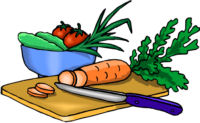
Nutty Bananas
Let the children enjoy this fun snack, which combines two favorite African foods– bananas and peanuts(groundnuts). Make a mixture of finely chopped or grated peanuts, wheat germ and cinnamon. Place small amounts of the mixture on paper plates and give each child one half of an unpeeled banana. To eat, have the children gradually peel their bananas and dip them into the nut mixture before taking each bite. You could substitute grape nuts cereal for the peanuts.
Africa Songs, Poems and Finger Plays
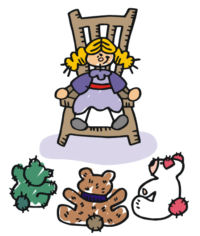
Africa Fingerplay
I’d like to go to Africa (Point to self.)
Where natives build straw huts like this (Join fingertips of two hands and form roof)
Where elephants have big, gray trunks (clasp hands and swing arms in front like a trunk)
Where natives’ arrow seldom miss (Shoot arrow in pantomime.)
Where lions shake their manes and roar (Shake head & roar)
I’d like to go to Africa. (Point to self)

Dear Reader: You can help us make this theme even better!
All of our theme ideas have come from our imagination and from reader submissions. Please use this form to contact us if you have crafts, activities, games, recipes, songs or poems that you would like us to add to this theme.

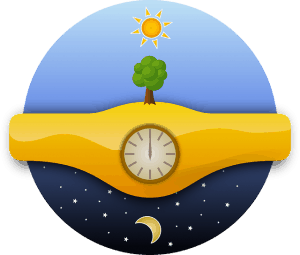
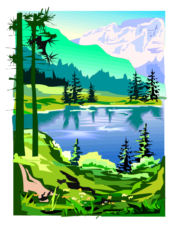
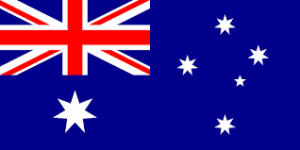
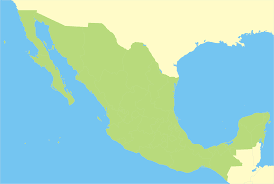


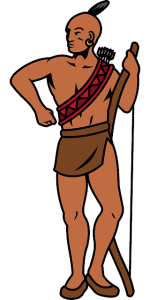
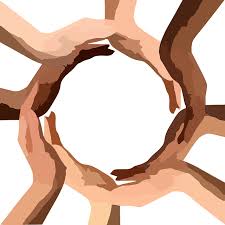
3 comments:
This always reminds me of my days as a young boy. we are almost losing our cultures as African people and am grateful that there are some people out there who love to see that the culture is not lost completely.
Hi this is very interesting. I’d like to know what is the melody of the song to teach to my students.
I’m a preschool teacher living in the United States Virgin Islands. Finding your site is a blessing to me and my students. I will be using all of your ideas to enhance and extend on our theme , “My Family”.